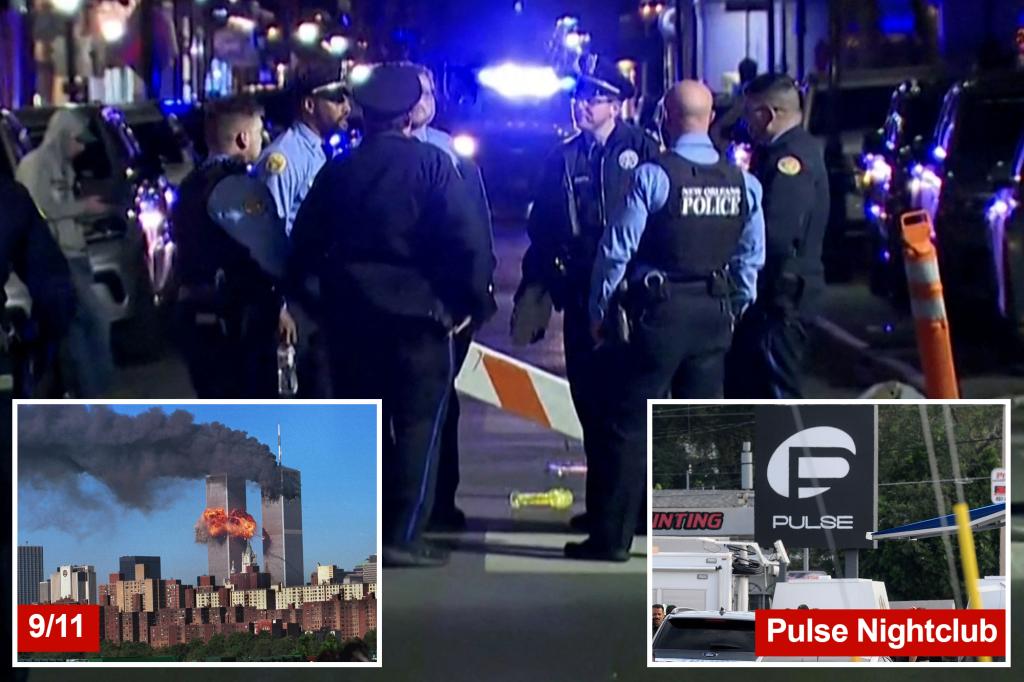The terror attack in New Orleans was one of the deadliest on US soil since 9/11 after the death toll rose to 15 on Wednesday afternoon. Five additional victims have died since it was announced that 10 people were killed when Shamsud Din Jabbar drove a rented truck through crowds on Bourbon Street, with an ISIS flag. A June 12, 2016, ISIS-inspired massacre at Orlando’s Pulse nightclub, which killed 49 people, stands as another tragic event in recent US history. Al-Qaeda’s attack on Sept. 11, 2001, remains the deadliest terrorist attack on US soil, killing more than 3,000 people.
FBI investigators believe that Jabbar was not solely responsible for the New Orleans terror attack. Pipe bombs disguised as coolers were found along Bourbon Street and linked to a remote detonator located in Jabbar’s truck, as per a Louisiana State Police bulletin. The investigation into the attack is ongoing, and authorities are working to determine the full scope of the incident. The coordination of the attack and the presence of explosives point towards a potentially larger, more organized operation.
The Boston Marathon bombing in 2013 and the San Bernardino massacre in 2015 are examples of terrorist attacks that involved coordination among multiple individuals. The Boston attack was carried out by the Tsarnaev brothers, while the San Bernardino massacre was committed by a husband and wife. Both incidents resulted in multiple fatalities. Lone wolf terror attacks, such as the Orlando mass shooting by Omar Mateen, are more frequent in the US. These attacks are carried out by individuals who are self-radicalized online and perpetrate acts of terror without direct guidance from larger terrorist organizations.
Fourteen people were killed in the San Bernardino attack when Syed Rizwan Farook and Tashfeen Malik opened fire on a Christmas party. The Tsarnaev brothers killed three spectators at the 2013 Boston Marathon. Lone wolf attacks like these pose a significant challenge to law enforcement agencies, as they are often difficult to predict and prevent. Nidal Malik Hasan’s mass shooting at Fort Hood in Texas in 2009, where 13 people were killed, is another example of an individual carrying out a deadly attack without direct coordination with a larger group.
The New Orleans terror attack on Bourbon Street underscores the ongoing threat of terrorism in the United States. As authorities continue to investigate the incident, questions remain about the extent of the attack and whether Jabbar had any accomplices. The presence of explosive devices disguised as coolers highlights the need for heightened vigilance and security measures in crowded public spaces. The history of terrorist attacks in the US, including 9/11, the Boston Marathon bombing, and the Orlando mass shooting, serves as a grim reminder of the potential for violence and the need for continued efforts to prevent and respond to such attacks.
In the aftermath of the New Orleans attack, the focus will be on identifying any links to larger terrorist organizations, understanding the motives behind the attack, and ensuring the safety of the public. The coordination of the attack, the presence of explosives, and the rising death toll all point towards a well-planned and executed act of violence. As investigations progress, authorities will work to piece together the events leading up to the attack and take steps to prevent similar incidents in the future. The resilience of the American people in the face of such tragedies and the dedication of law enforcement agencies to protect the public will be crucial in the ongoing fight against terrorism.


